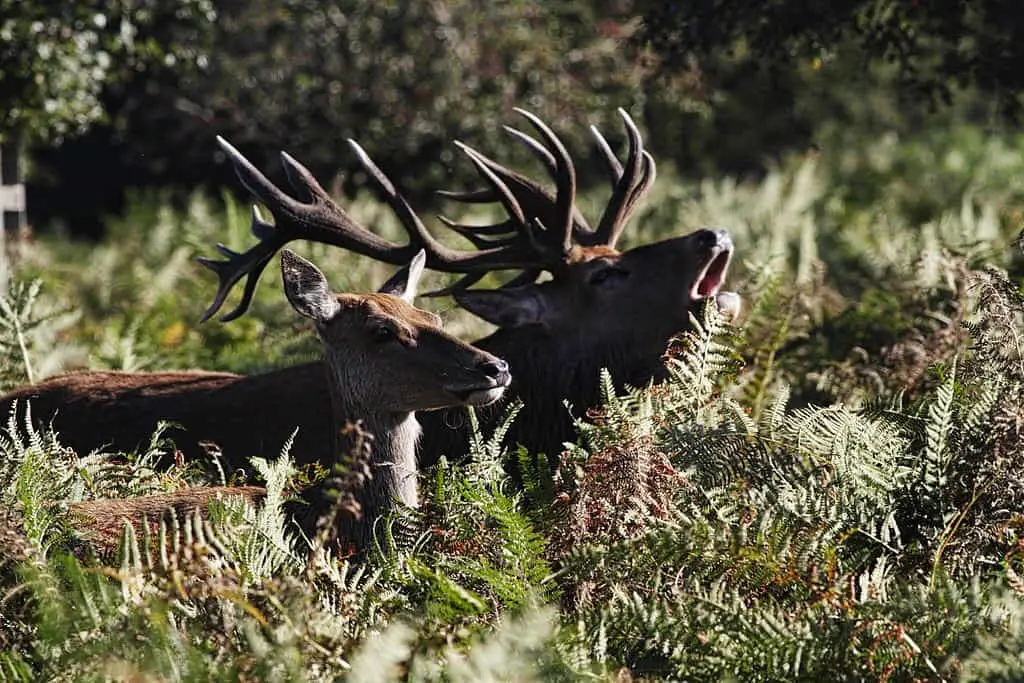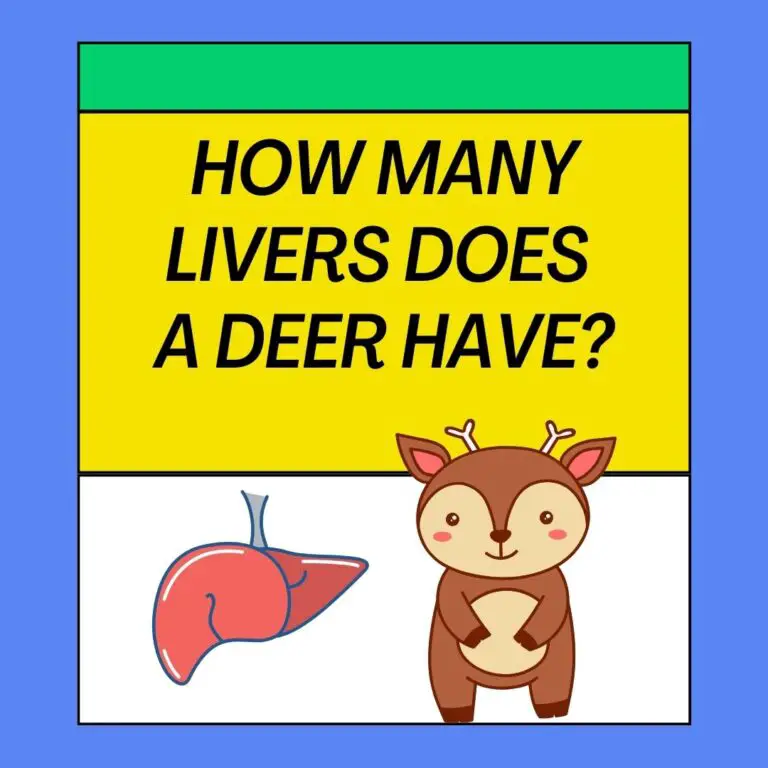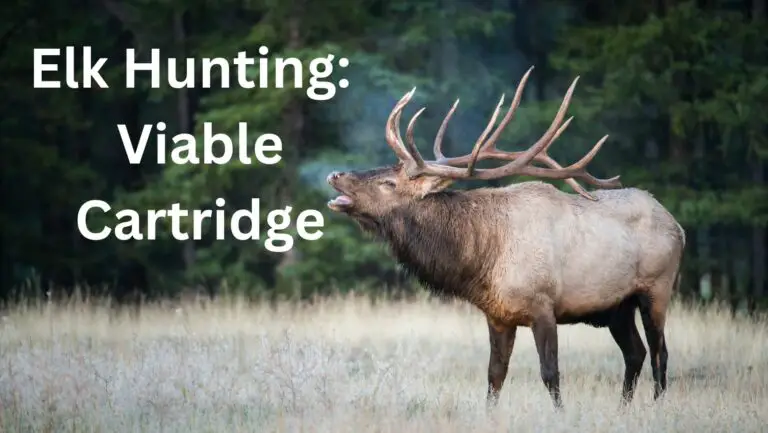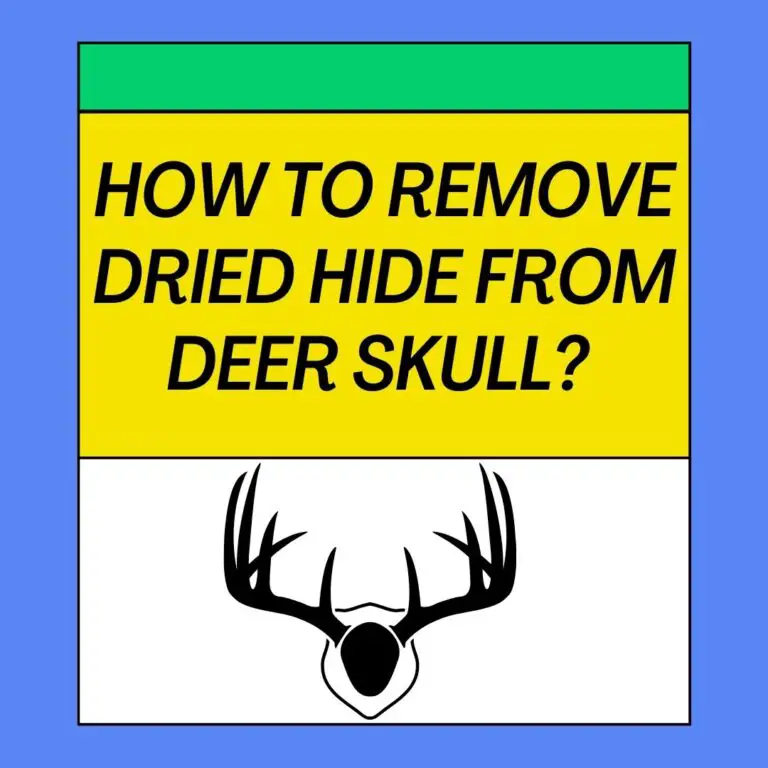
Do deer make sounds? What sound does a deer make? I’m familiar with the different sounds and calls a deer makes due to years of accompanying my dad whenever he goes out to hunt. I may be familiar and experienced, but I’m not an absolute expert when it comes to “deer calling”. The content of this article is based on experience, research, and information from my fellow hunters.
Do deer make sounds? Definitely yes! In fact, deer are very vocal. We just don’t hear them because, in the presence of a predator (hunters like us and other wild beasts), they run like ghosts, not a single sound nor footstep.
In reality, bucks, does, and fawns use various sounds to threaten, communicate, call for help, and convey information to one another. We’re all too familiar with the grunting and snorting noises of deer, but most of us have heard very little of the other sounds they create. Have you listened to a fawn’s distress call? Or a buck’s mating call?
In this article, we’ll discuss the various sounds deer make and a method of luring deer by deer calling.
Let’s start!
Different Sounds Deer Make
According to Donnie Hoover, author of the 52 Deer Hunting Tips, there are two general types of calls deer make:
- Deer grunt calls – these sounds are used by deer to challenge a fellow dear. Usually, dominant bucks make these calls when a fellow buck passes by or attempts to cross his territory.
- Deer bleat calls – fawns and does use bleat calls as a distress call to the bucks or whenever their hormones are raging, something like a “seduction” thing. You’ll frequently hear bleat calls made by does during the rutting season.
The two general types of calls were further divided into eight stereotypic calls by mammalogists. These are the following:
- Bleat
- Distress
- Nursing whine
- Grunt
- Alert-snort
- Footstomp
- Snort-wheeze
- Aggressive snort
Older male white-tailed deer emit the grunt, alert-snort, foot stomp, snort-wheeze, and aggressive snort while the nursing whine and bleat can only be heard from does and fawns. The distress call can be made by the bucks and does, as well as fawns.
5 General Types of Calls Deer Make
1. Alert Calls
A deer will stomp on the ground and flag its tail if it senses something amiss. If it’s certain that danger’s near, it will snort very loudly (alert-snort) while keeping an eye out from every angle.
You can hear the distinct alert-snorting sound which resembles a loud “blowing” sound clearly even if you’re far from the perimeter. Then they’ll swiftly run to their nearest comrade with their tails raised, to alert them.
To see how the perfect signaling is done, watch the video below.
Hunters, hate that sound because it means failure. Once one deer alerts the others, they’ll run fast like crazy into various directions. Consequently, it’ll be almost impossible to track them.
2. Calls That Express Dominance
Bucks make the loud, short grunts to exhibit dominance from the rest of the group, to urge mating with a doe, and to challenge other bucks to a fight. Grunting is by far the most common sound hunters hear all the time. Soft consistent grunts can also be heard when a herd of deer talk with each other.
Bucks are very territorial. When he senses other bucks lingering around his area, he makes a grunt-snort-wheeze noise to ward them off, threaten them and show who the dominant one is. The grunting noise is then followed with a snort and a long wheezing sound. This call is a form of aggression and provocation, something like “come at me,bro”.
Check out the videos below to have an idea what a “snort-wheeze” sound like
Bucks also make the same grunt-snort-wheeze noise when he’s frustrated with a doe that isn’t ready to breed yet.
Moreover, when a buck sees another buck trying to flirt with his doe, he’ll challenge his fellow deer to a fight, making aggressive snorts while rattling their antlers. When other deer hears this, they’ll run to where the mad sounds come from and watch the fight. Yes, they’re much like humans too.
3. Mating calls
The pre-rut and rut seasons are the favorite hunting time of hunters because bucks and does are abundant and are very visible during those seasons.
Bucks grunt to show dominance and whenever he’s planning to follow and pursue a doe. Similarly, does grunt and bleat to seduce a buck. The grunting sound may be high-pitched, low-pitched, long, and short.
When they’re in the process of following a doe, bucks make high-pitched short grunt calls followed by short wheezes to “sweet talk” the doe. If they’re lucky enough to attract the doe, they’ll make a long, low-pitched grunt before mounting the doe.
See the video below for the actual sound.
4. Juvenile Calls
Bleat sounds are pretty much what fawns make most of the time for a variety of reasons. The sound resembles a goat’s “mehhh”. If you hear a bleating sound, you’re sure that fawns are running around the area.
Bleat sounds may signify contentment, mother-offspring bonding, feeding, and general interaction.
In turn, does make a low-pitch nursing whine or soft grunts when they are feeding the fawns or interacting with a fellow doe.
Play the video to hear what a bleat call is
5. Distress call
Obviously, distress calls are meant to call for help. Fawns and does usually make distress calls to nearby bucks when they’re in danger. Distress calls are prolonged bleat calls which are meant to draw nearby deer to the injured one’s location. Play the video below to know what a distress call is.
Deer Calling: Attracting Deer, Does, and Fawns With Sounds
Deer calling has long been used by hunters to lure deer by mimicking the sounds they make. It uses a whistling instrument called a “deer caller” to generate the sound.
Not knowing the sounds bucks, does, fawns make will the deer calling device worthless so I opted to show you the different calls deer make in the first part of this article. I hope you learned so you can effectively execute deer talking.
There are other ways of luring deer in your bait aside from using deer calling instruments. You can also use deer attractants such as sprays, nutrient solutions, and doe urine. But in this article, we’ll talk about luring deer with the use of a deer caller.
They say that deer hunting is predominantly a “waiting game”. But with the use of a deer caller, we can pretend to be one of them and lure them to our bait… instantly. That is, if you have mastered the different sounds they make and if the season and location is right.
There are several deer callers sold on the market. The best would be the Primos Hardwood Grunter Call, Primos Power Buck and Doe Call, and the famous Extinguisher Deer Call. Deer callers are extremely easy to use. They have two or three settings in the form of buttons or control sliders which allow you to shift to a buck’s, a doe’s, and a fawn’s sounds.
You just need to place it on your lower lip, blow through it and its intricate clicking tones and reed machinery will mimic the deer sound naturally, attracting the nearby creatures.
Of course, if you blow too hard, the caller will generate a loud noise, putting the deer in defense mode whereas if you blow softly, the sound that will echo is a “seductive” one, like a doe searching for a buck in the rutting season.
Some Ways To Customize Your Blowing To Produce The Sound You Want
- Pause a few seconds in between blowing to create soft, continues grunts
- Choking the end of the reed with the use of your pinky finger to produce a sharp buck grunt pitch
- Cupping your palm into the end of the reed and slowly releasing it while sustainably blowing the caller to produce a more aggressive buck tone
- Choking the end and tightening/loosening your cupped palm on the reed’s end while blowing the caller to further create a low-pitch sound, imitating a doe and a fawn.
Air pressure control is the key. When you know how to control air pressure, you can make every sound better and more natural. Check out the instructional videos below to know various techniques you can do to customize your calling.
When To Use Deer Callers
Early Season
Deer callers won’t guarantee a catch, especially if you use them during the early season when the does’ and bucks’ hormones are not in rage. You will scarcely see a buck lingering by itself during this season. However, you might have a chance if you trace a lone buck and call it using the deer caller. It will arouse his curiosity, leading him to you.
Pro hunters advise using food baits such as liquid nutrients and some crops to lure in bucks during the early season
Pre-rut And Rut Season
Well, you might just be lucky to score one if you hunt during the pre-rut and rut seasons. Deer callers are most effective during the pre-rut and rut season because mature bucks and does are ample during these seasons, making it easier to spot and lure them.
You should center your calls on mating activities. Since bucks are looking for does this time, you can mimic a soft bleat sound just like a doe, to lead a buck into your direction. Also, during this time, bucks are fighting violently over does so you can use this to your advantage. Make short grunts and long wheezes to make it appear like you’re chasing a doe, attracting nearby bucks looking to fight for a doe.
Late Season
Very few deer go out to mate during this season, but it’s not impossible to catch one. It may be hard to lure a buck, but not a doe. You can mimic a fawn’s distress call to make a doe run into your direction, looking to rescue the fawn.
Read More: What Does Deer Meat Taste Like? Is It that Good?
Final Thought
Deer calling is one of the most effective ways of luring a deer. But dear reader, deer calling is just a small chunk of road to success. Selecting the right season and location, preparing your hunting weapon, tracking and observing the movements of the deer, estimating the distance, and staying invisible are the other essential things you must do in order to bring home the deer.
Hey hunter! Have you ever tried deer calling? What sounds did you mimic? Is it effective? Can you share it with us? Comment below!
Did we answer your questions in this article? Is it useful? If so, go share it!

I’m Cindy, a free-spirited outdoor enthusiast. Since childhood, Our family frequently goes on weekend camps and my father, who was a skilled hunter, used to teach my siblings and me valuable things about wildlife survival. I made this blog to share my knowledge, experiences, and tips.






